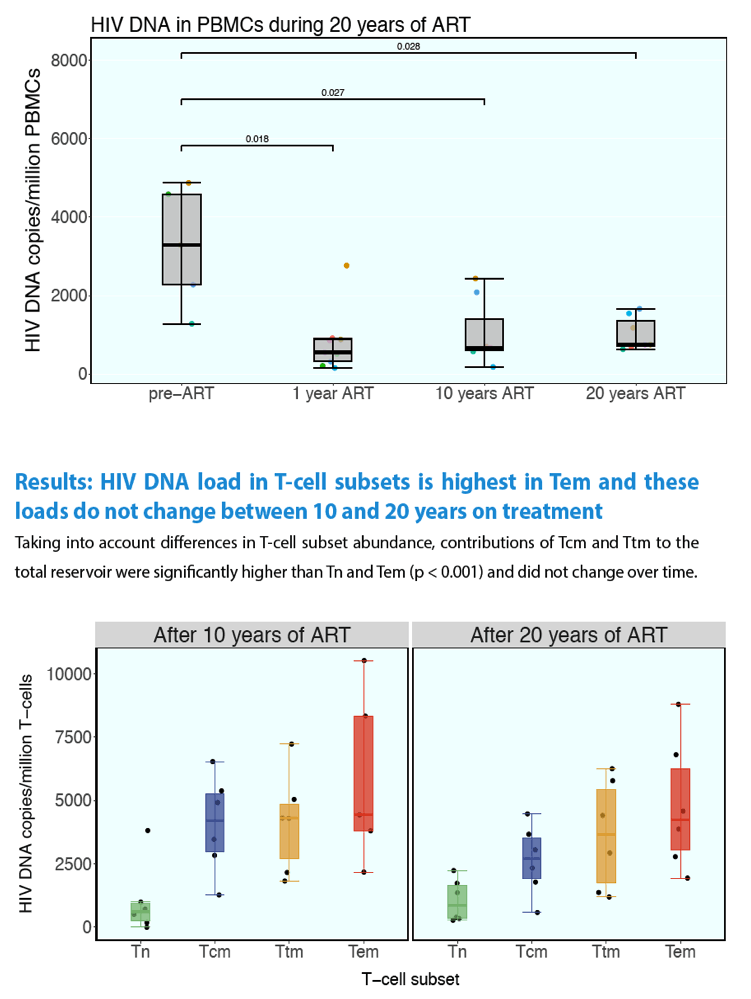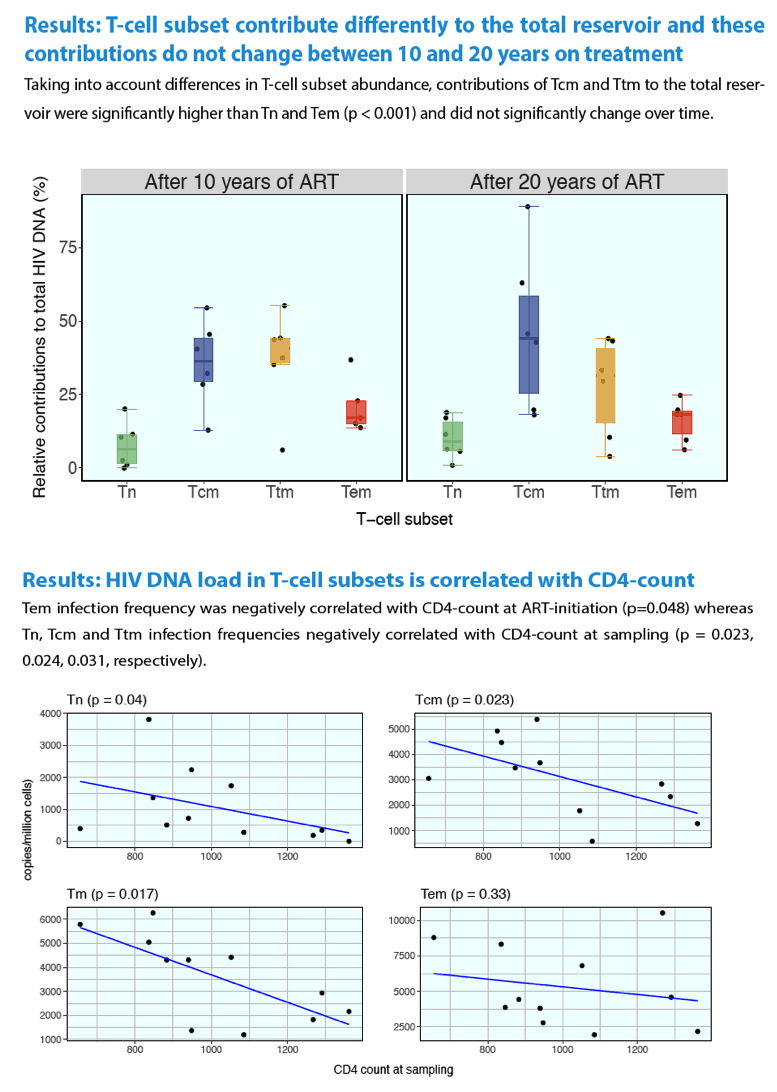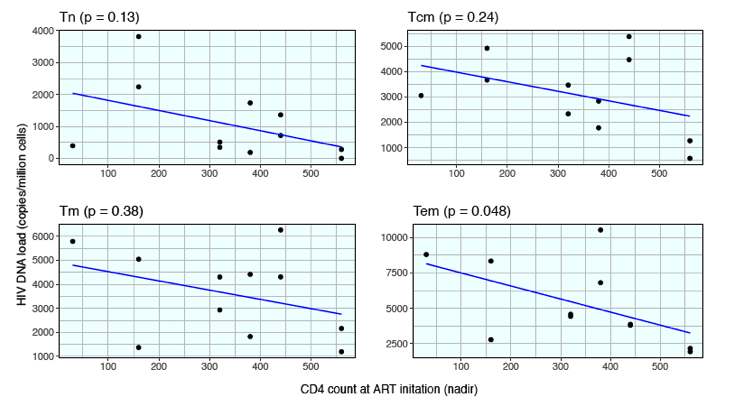 |
 |
 |
| |
HIV DNA reservoir size and make-up "remarkably" stable through 20 years of ART
|
| |
| |
22nd International AIDS Conference, Amsterdam, Netherlands, July 23-27, 2018
Mark Mascolini
Size and make-up of the latent HIV DNA reservoir in peripheral blood mononuclear cells (PBMCs) did not change through 20 years of suppressive antiretroviral therapy (ART) in an analysis of 7 people [1]. University Medical Center Utrecht researchers concluded that "treatment alone does not shift the viral reservoir towards the most differentiated T-cell subsets," as anticipated in certain HIV eradication strategies.
The HIV DNA reservoir persists in people responding to ART and poses a major obstacle to curing HIV infection. Previous research established the stability of the DNA reservoir but did not address the contribution of T-cell subsets to this reservoir through decades of ART. Some postulated that drug-induced manipulation of stem-cell pathways responsible for persistence of certain T-cell subsets could upset stability of the HIV DNA reservoir--the so-called push-and-vanish strategy [2].
The Utrecht analysis involved 7 antiretroviral-treated people with an undetectable viral load since 1996. All 7 gave blood samples when ART began, then 1, 10, and 20 years later. PBMCs from large blood samples collected at 10 and 20 years could be sorted into 4 T-cell subsets: naive (Tn), central memory (Tcm), transitional memory (Ttm), and effector memory (Tem) CD4 cells. The researchers measured HIV DNA in PBMCs with a digital droplet PCR assay aimed at the HIV-LTR region.
HIV DNA in PBMCs dropped sharply in the first year of ART, from 3260 to 794 LTR copies per million cells (P = 0.018). But after that HIV DNA levels did not waver in PBMCs for the next 2 decades, measuring 1039 LTR copies per million cells at 10 years and 1027 LTR copies per million cells at 20 years.
Nor did CD4 T-cell subsets vary through 20 years of ART. Contributions of Tcm and Ttm subsets to the total reservoir were significantly higher than contributions of Tn and Tem subsets (P < 0.001). And these relationships did not change from year 10 to 20. Tem infection frequency (average 6633 LTR copies per million cells) proved significantly higher than infection frequency of the other T-cell subsets (952, 3424, and 4211 LTR copies per million cells for Tn, Tcm, and Ttm). And again that relationship did not shift over time.
The Utrecht team concluded that (1) HIV DNA in PBMCs does not drop after the first year of ART and (2) T-cell subset infection frequencies and contributions to the total HIV DNA reservoir hardly vary through 20 years of therapy.
References
1. Bosman K, Tesselaar K, Arends J, et al. Remarkable stability in size and composition of the latent reservoir over two decades of ART. AIDS 2018: 22nd International AIDS Conference, Amsterdam, Netherlands, July 23-27, 2018. Abstract WEPEA030.
2. Chahroudi A, Silvestri G, Lichterfeld M. T memory stem cells and HIV: a long-term relationship. Curr HIV/AIDS Rep. 2015;12:33-40.





|
| |
|
 |
 |
|
|